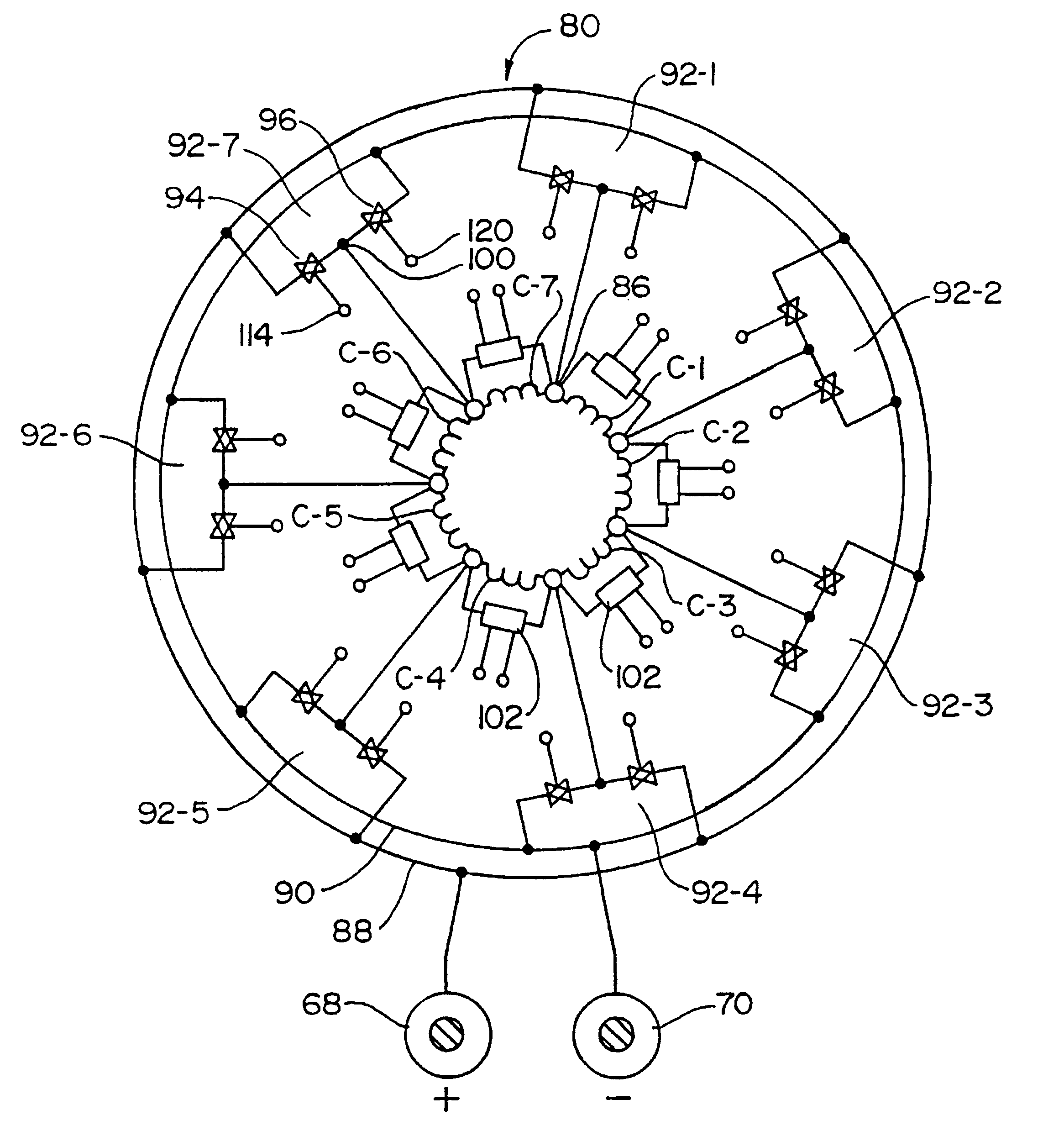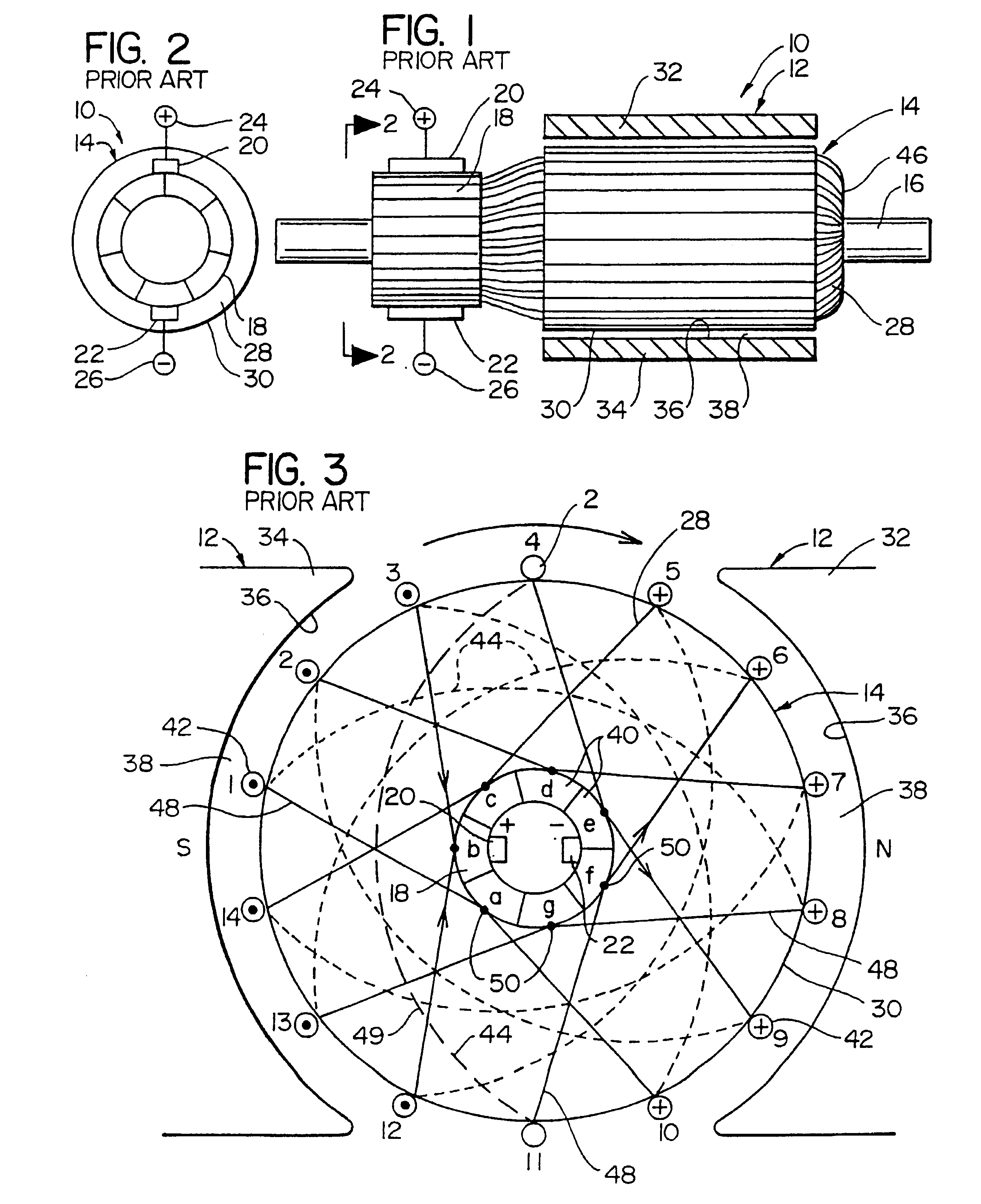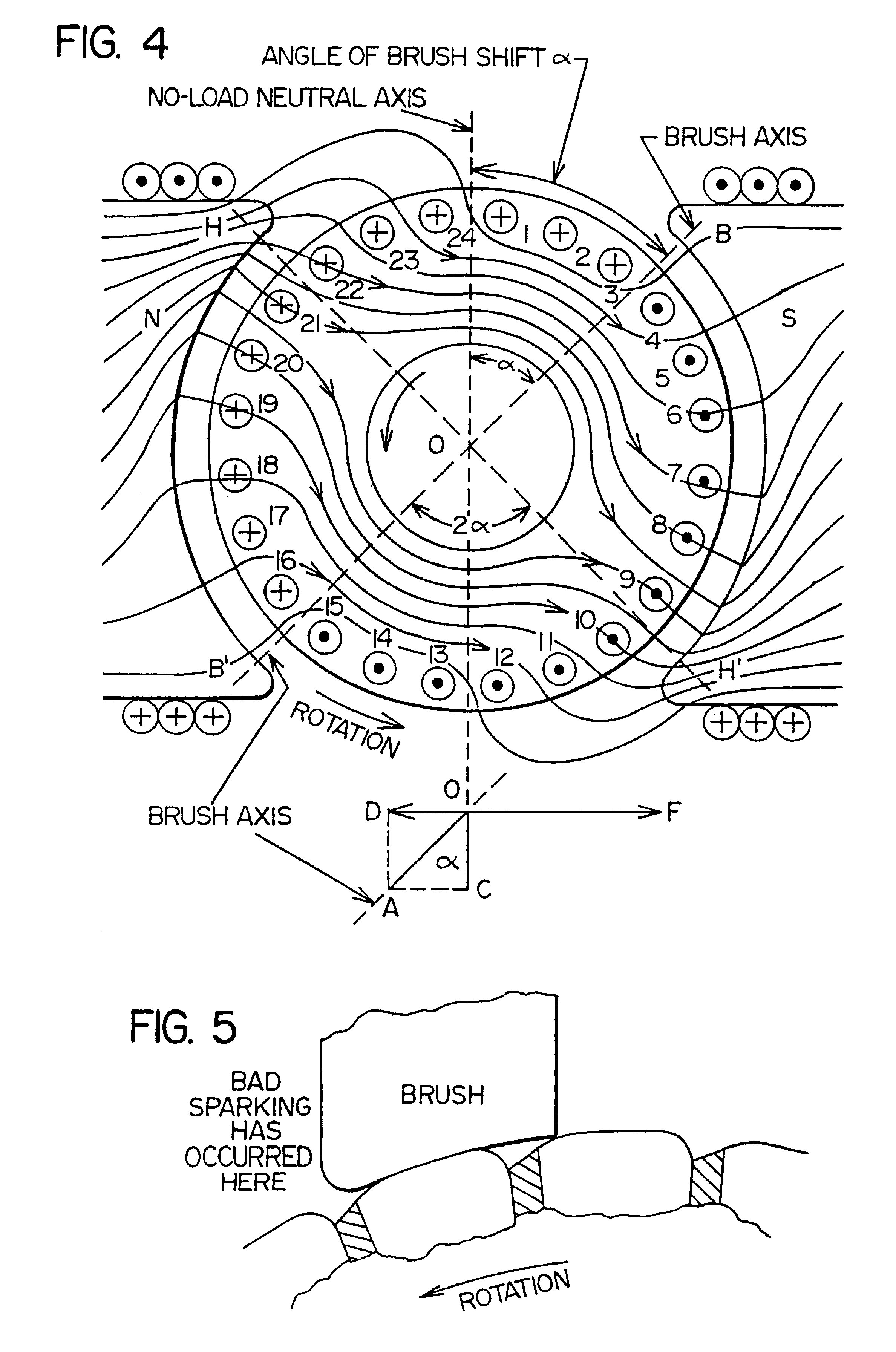Dynamo-electric machines and control and operating system for the same
a technology of dynamo-electric machines and operating systems, which is applied in the direction of electronic commutators, motor/generator/converter stoppers, dynamo-electric converter control, etc., can solve the problems of affecting the operation of the commutator, causing disastrous sparking at the brush contact, and wearing at the receding edges of the commutator segments and at the trailing brush tips
- Summary
- Abstract
- Description
- Claims
- Application Information
AI Technical Summary
Problems solved by technology
Method used
Image
Examples
second embodiment
The switching arrangement of the present invention is disclosed in FIG. 17. Since there is an even number of inductive armature coils, there will be more than one coil segment which is being switched at a given time. The voltage spike for each of these coil segments will be opposite to one another. These two voltage spikes can thus be directed simultaneously into the power buses so that these effectively would balance each other without power loss.
In FIG. 17 there are shown eight separate switches designated A through G. There are eight coils, and each of the numbers 1 through 16 represent individual coil segments. The coil segments are disposed diametrically opposite to one another. Thus, the segments 1 and 9 make up one coil, the segments 2-10 make up another coil segment, etc.
To describe the operation of the arrangement shown in FIG. 17, at any one time one of switch assemblies (such as shown at 92 in the prior embodiment) has the positive switch made conductive, while an opposit...
third embodiment
FIG. 18 shows the present invention, where the a stator of the motor 60a comprising two north poles and two south poles, and there are eighteen coils. The switching between the coils is accomplished in generally the same manner as illustrated in FIG. 17. The embodiment of FIG. 18 is shown to illustrate that the present invention can be embodied in a motor where there are multiple north and south poles.
FIG. 19 shows a fourth embodiment of the present invention. In this embodiment, there are six coils designated C-1b through C-6b. As in the first embodiment, there are switch assemblies 92, each having positive and negative switches 94 and 95. However, the individual coils C-1b through C-6b are not connected to one another in series. Rather, each end of each coil are connected to an individually related switch assembly 92.
Thus, in the operation of the embodiment of FIG. 19, each coil is made conductive by turning on the positive switch 94 of one of its related switch assemblies, and at...
fifth embodiment
FIG. 20 shows the present invention where the concept of the present invention is adapted to a design related to a synchronous motor. In a synchronous motor, the flux field is developed through an AC current so that the flux field travels a circumferential path around the stationary outer member (the "stator). In a conventional synchronous motor, the rotor positioned within the stator often simply has permanent magnets with the poles of the magnet being positioned adjacent to the rotating flux field so that the rotational movement of the flux field interacts with the poles of the rotor poles to cause the rotor to rotate synchronously with the field traveling around the circumference of the stator.
To incorporate the present invention in the basic design of a synchronous motor, the rotor, instead of being provided as permanent magnets, is provided with an armature made in accordance with the present invention having the switching and control assembly of the present invention. The swit...
PUM
 Login to View More
Login to View More Abstract
Description
Claims
Application Information
 Login to View More
Login to View More - R&D
- Intellectual Property
- Life Sciences
- Materials
- Tech Scout
- Unparalleled Data Quality
- Higher Quality Content
- 60% Fewer Hallucinations
Browse by: Latest US Patents, China's latest patents, Technical Efficacy Thesaurus, Application Domain, Technology Topic, Popular Technical Reports.
© 2025 PatSnap. All rights reserved.Legal|Privacy policy|Modern Slavery Act Transparency Statement|Sitemap|About US| Contact US: help@patsnap.com



